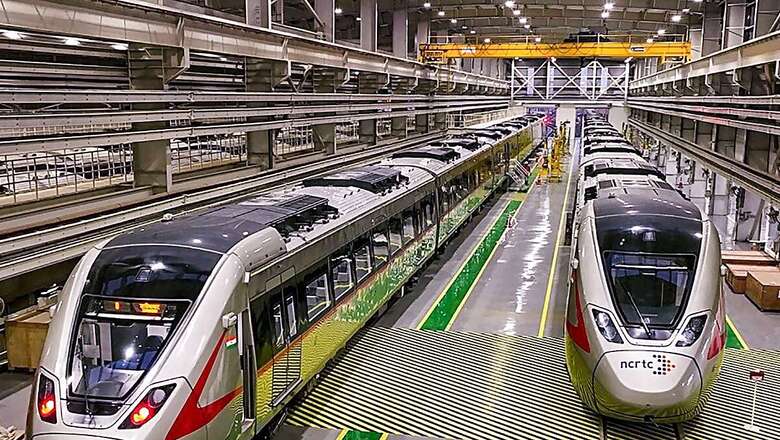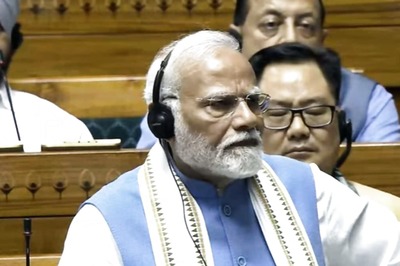
views
To ease the last-mile journey of commuters, the National Capital Region Transport Corporation (NCRTC) and Ghaziabad City Transport Service have joined hands to offer bus services to and from seven routes, covering several parts of the area, including Kaushambi and Loni in Ghaziabad and Dilshad Garden in neighbouring Delhi for India’s first Regional Rapid Transit System.
These 50 electric buses for seven routes can be boarded/deboarded from/at bus stops developed near the entry-exit gates of stations on the operations stretch of the Delhi-Meerut Regional Rapid Transit System (RRTS), the NCRTC announced on Wednesday.
Speaking to News18, an official said that the routes covered will be Kaushambi to Kanoja Village (connecting to Sahibabad, Ghaziabad, Guldhar and Duhai RRTS Stations), Purana Bus Adda to Mandola Ghaziabad route (connecting Ghaziabad RRTS station), Kaushambi to Modi Nagar route (connecting to Sahibabad, Ghaziabad, Guldhar, Duhai, Murad nagar, Modi Nagar South and Modi Nagar North RRTS stations), Loni to Purana bus adda route (connecting to Ghaziabad RRTS station), Dilshad Garden to Massuri route (connecting to Ghaziabad RRTS station), Kaushambi to Sanjay Nagar/ALT route (connecting to Sahibabad and Ghaziabad RRTS station), and Kaushambi to Govindpuram route (connecting to Sahibabad and Ghaziabad RRTS stations).
These bus services, the official added, will also ease the journey for those who commute from Delhi Metro and want to board the RRTS. The details of these buses, including fare and timing are available on the RRTS Connect mobile app.
“The integration covers key RRTS stations, including Sahibabad, Ghaziabad, Guldhar & Duhai. NCRTC is also in talks with the authorities to get Muradnagar, Modi Nagar South, and Modi Nagar North stations integrated with these city buses,” the NCRTC said.
Additionally, NCRTC has also collaborated with RAPIDO to provide cab services at Sahibabad and Ghaziabad RRTS stations including auto-rickshaws, two-wheeler bike taxis, as well as four-wheeler cabs.
“NCRTC is also installing fast EV chargers in parking areas of RRTS stations to enhance last-mile connectivity. This will lead to increased use of both Electric Vehicles and Namo Bharat trains, while also creating a sustainable and eco-friendly hub of public transport modes,” it added.
Expressions of interest have also been invited from other cab aggregators and bus operators for integration with all the 25 stations across the Delhi-Ghaziabad-Meerut RRTS Corridor, which will further enhance the connectivity of urban nodes with the RRTS stations, creating a transport hub.
“NCRTC aims to deliver a cohesive and hassle-free network of networks across the National Capital Region (NCR) by integrating bus stands, airport, metro stations and railway stations with RRTS stations. RRTS stations have been strategically designed in such a manner that they enable commuters to move from one mode of transport to another conveniently,” the NCRTC added.
Presently, a 34 km section between Sahibabad and Modi Nagar North of the Delhi-Ghaziabad-Meerut RRTS corridor is operational. It is connecting Sahibabad, Ghaziabad, Guldhar, Duhai, Duhai Depot, Murad Nagar, Modi Nagar South, and Modi Nagar North. The NCRTC is expecting to complete the entire stretch by June 2025.




















Comments
0 comment